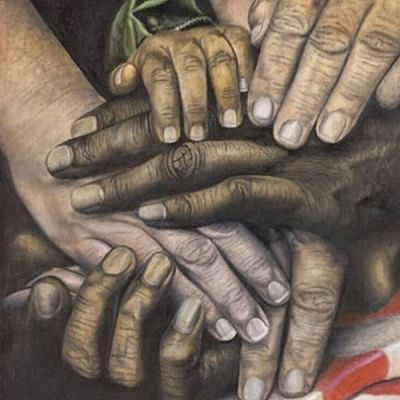Redefining cultural borders

Some years ago, at a tea party in our home, an English friend devoured five samosas and exclaimed: "I just love these "triangular starters"—you must share the recipe with me!" The guests laughed, relishing the quaint nomenclature for a samosa—a South Asian food that has crossed cultural barriers in its popularity. However, with the current raging debate over "cultural appropriation", it may no longer be politically correct to call the samosaa "triangular starter", or the rasgollaha "round syrupy sweet." This would perhaps ignite an Internet war followed by accusations of tilting the food rhetoric toward a western bias!
Originally an academic terminology, "cultural appropriation" is now widely used to describe the adoption of elements of one culture—foods, symbols, traditions, fashions, music—by members of another culture. The protagonists of the concept believe that there is a need for an intellectual fence that guards against "culture theft". The reasoning being that the nuances of a culture may be lost or the culture itself could be distorted or disrespected when expressed…in words or action…by people who are not inherently part of that culture.
There seems to be some merit to this argument, especially when we take into account the literature written about the colonies by colonial authors. Many of these writings may be termed as the appropriation of an oppressed group's culture by a privileged group. For example, in A Passage To India, EM Forster tried being "fair" to Indians, but ended up with a mostly British perspective. George Harrison was instrumental in popularising Indian music in the western world. But he also created an image of Indian music that was closely associated with the Hare Krishna cult. One wonders how much of that was culturally representative!
All this happened long before the term "cultural appropriation" leapt from the realm of academia to the real world and when there was no internet to attack people for patronising disrespect. It is true that in today's globalised world, some checks and balances are required to ensure that a foreign culture is portrayed with sensitivity and authenticity. Wearing a bindi and dancing to a Bollywood tune in a disco in London may be a fun activity. But there may be a risk of stereotyping and propagating the idea that the tinsel world of Bollywood represents the reality of India. Advocates against cultural appropriation try to ensure that negative stereotypes are not projected, and in the case of cultural adaptation, the source is recognised.
There is, however, much to be said about the other side of this emotional debate. The fact is that the boundaries of culture have been gradually shifting over centuries. Culture is not a static concept and cannot be hermetically sealed. It is persistently mutating, evolving, and growing. The critical question is where does one draw the line, how does one enforce "cultural purity", and is it really necessary to do so? I personally feel that an exchange of cultures is a potent unifying force, leading to a greater appreciation and understanding amongst peoples. What is important, however, is to ensure sensitivity in adopting, depicting, or projecting cultures. I remember a very meaningful poster that I once saw in an office wall. It said: "Caution! Cultures are crossing here."
The need for cultural sensitivity has become even more pronounced following the recent refugee flows into Europe, and the latent "nativist" feelings being whipped up by right-wing groups in the US. There is much talk about an alien cultural invasion and the need to adhere to strictly defined codes. Despite this push back, cultural crossovers are occurring with a constant interchange of ideas, styles, and traditions. This cultural sharing in a modern, multicultural society is not only inevitable, but also good for social cohesion.
Much of the controversy over cultural appropriation stems from a turf war about the ownership of a particular culture or tradition. A close to home example is the continuous debate over poet Kazi Nazrul Islam. He is projected as a Muslim or a Hindu poet depending on which side of the Bangladesh-India border is promoting his works. Considering that the poet himself stated his position so clearly: "I sing the song of togetherness/ nothing is greater than humanity/ nothing more worthy", it is indeed tragic that he has fallen victim to the politics of cultural appropriation on both sides. Nazrul's work is especially relevant to our time, since he used a variety of sources and traditions from the subcontinent and beyond, and intertwined them to create a harmonious tapestry of poetry and music to connect people. To diminish this endeavour by using the cultural appropriation argument would be unjustified.
No matter what the crusaders against cultural appropriation may say, the truth is that it is difficult to define the boundaries of art, literature and music. We cannot block human minds from wandering into unchartered territories that touch the subconscious and inspire creativity. For culture dwells as much in the realm of imagination, as in physical expression. And there are no borders in the kingdom of creative fantasy!
Milia Ali is a renowned Rabindra Sangeet exponent and a former employee of the World Bank.





Comments